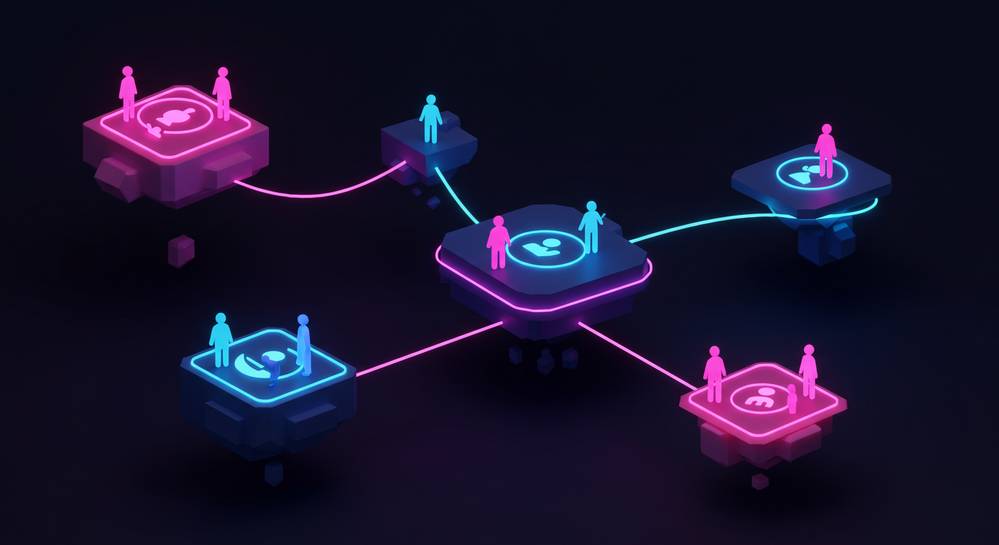Are you tired of social media platforms that monetize your data while you get nothing? A new movement is here to change that. The socialfi latest trend in crypto combines social networking with decentralized finance, aiming to give power back to users and creators. This article explains what SocialFi is, how it works, and why it might be the future of our online interactions.
What exactly is socialfi
SocialFi, a portmanteau of social and finance, represents the convergence of social networking and decentralized finance on the blockchain. Unlike traditional Web2 platforms like Facebook or X, SocialFi applications are built on decentralized principles. This fusion is the socialfi latest trend in crypto, fundamentally reshaping user-platform dynamics and exploring new trends in decentralized applications.
The core idea is returning data ownership and monetization power to users and creators. Instead of your content generating ad revenue for a corporation, you have direct control. You can earn from your influence without intermediaries taking a large cut, a significant shift from the traditional internet economy.
Core characteristics of the socialfi model
- Data Ownership: Users maintain full control over their personal data and social connections, often secured on decentralized networks or as unique digital assets.
- Censorship Resistance: With no central entity in charge, it becomes significantly harder for a single authority to arbitrarily remove content or ban users.
- Direct Monetization: Creators can earn directly from their work through social tokens or audience payments, bypassing the large fees taken by intermediaries.
How does socialfi work in practice

SocialFi platforms leverage various blockchain components to create a decentralized social experience. These building blocks enable user ownership and new economic models not possible in the Web2 world. The primary mechanics revolve around tokenization and community governance, a key aspect of the socialfi latest trend in crypto.
Social tokens and nfts
At the heart of many SocialFi apps is the concept of tokenizing social value. Creators can launch their own social tokens, which fans buy for exclusive access or voting rights. A single post can be minted as a Non-Fungible Token (NFT), making it a unique, ownable, and tradable digital asset.
Decentralized community governance
Many SocialFi platforms are governed by a Decentralized Autonomous Organization or DAO. This structure lacks central leadership, with decisions made by the community. Users holding governance tokens can vote on proposals, influencing platform features, content moderation, and treasury management.
Exploring prominent socialfi platforms

The SocialFi landscape is dynamic and evolving, with several platforms experimenting with different models to attract users. While some focus on tokenizing influence, others are building decentralized social graphs. These projects exemplify the socialfi latest trend in crypto and showcase some of the latest cryptocurrency market trends. Here is a look at prominent projects defining the space.
| Platform | Core Concept | Blockchain | Key Feature |
|---|---|---|---|
| Farcaster | A sufficiently decentralized social network protocol. | Ethereum (Layer 2) | Users control their identity and social graph. Data is portable between different client applications. |
| Friend.tech | Tokenizing social influence. | Base (Ethereum L2) | Users can buy and sell keys of other users profiles to gain access to private chat rooms. |
| Lens Protocol | A composable and decentralized social graph. | Polygon | Users own their profile, followers, and content as NFTs, creating a portable social identity across apps. |
The future and challenges of socialfi

While the vision of a decentralized social internet is compelling, its path to mass adoption is complex. The journey is filled with both immense potential and significant hurdles. Understanding this balance is key to evaluating if SocialFi will endure beyond being the socialfi latest trend in crypto.
Potential and opportunities
The upside of SocialFi is a more equitable and open digital social space. It promises to empower a true creator economy where value flows directly between creators and their communities. Furthermore, data sovereignty means users can protect their privacy and control their digital footprint. This stands in stark contrast to the data harvesting models of Web2.
Risks and hurdles
However, the space is not without its challenges. User experience on many decentralized apps still lags behind centralized counterparts, posing a barrier to mainstream adoption. Scalability of underlying blockchains can also be an issue, leading to high fees or slow transaction times. Finally, the financialization of all social interactions could lead to speculative bubbles and create new forms of social inequality.
SocialFi represents a fundamental paradigm shift rather than just a fleeting trend. It challenges the status quo of centralized social media by placing ownership, control, and monetization capabilities in the hands of users. While hurdles remain, its potential to build a more equitable and open digital public square is undeniable. For more insights into Web3 and crypto, explore the Digicash Blog.
